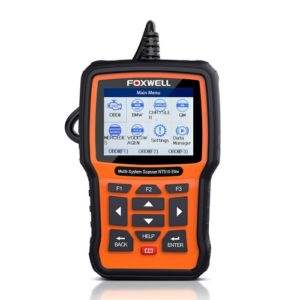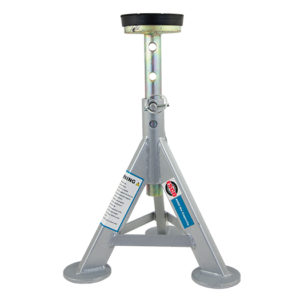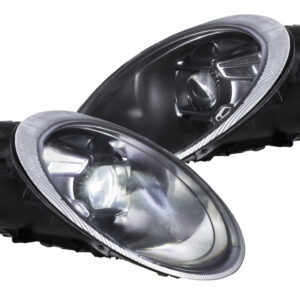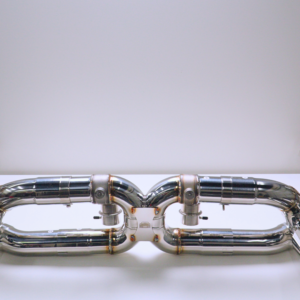To increase cargo space and reduce vehicle weight, many newer vehicles do not come with spare tires. Instead, the manufacturer includes an air compressor and tire sealant kit. In the event of a flat, you are supposed to empty the tire sealant into your tire, then inflate it to the correct tire pressure. To ensure you have the ability to deal with a tire puncture, it is important to check the expiration date of your tire sealant.
Porsche recommends inspecting the tire sealant annually. The expiration date can be found on the bottom of the bottle and should be replaced once it expires. In the above video from YouTube channel, Blinkerspot, you can see what happens to old Porsche tire sealant over time. To replace the tire sealant, you can purchase the Porsche branded version, but it will set you back around $100. Instead, you can either replace your tire sealant with a generic, but identical version made by Terra S or go with a commercially available product such as Slime.
While tire sealant can help with a small puncture, it will not work on larger punctures or gashes. Additionally, use of a fix-a-flat type of tire sealant will require you to get your tire and wheel serviced immediately. If the tire sealant is left in the wheel for too long, it could damage your tire pressure monitoring system (TPMS) sensor and even corrode your wheel. Therefore, we actually recommend using a tire plug / repair kit over tire sealant if possible. Check out the rest of the article for instructions on how to use a tire repair kit and tire sealant in the event of a roadside emergency.
Step 1: Pull your vehicle over in a safe area.
- Stay calm and avoid sudden vehicle maneuvers as your vehicle’s handling capabilities will be greatly diminished with a punctured tire(s).
- Turn on your hazard lights immediately, so other drivers know you are experiencing vehicle trouble.
- Find a safe, well-lit area that is out of the way of traffic to pullover.
Step 2: Assess the situation.
- Be aware of your surroundings; before getting out of the vehicle, make sure it is safe to do so.
- Put on a reflective vest and place hazard triangles, so other drivers are aware of your situation.
- Carefully walk around your vehicle and see if you can identify the damaged tire(s).
- Once you find affected tire(s), see if you can identify the puncture; you may need to reposition your vehicle to identify the culprit.
- Depending on the size of the puncture, you may be able to repair it with either a tire repair kit or tire sealant; if you have a gash, you will not be able to fix it.
- In any event, if you are not comfortable addressing the situation yourself or are unsure of what to do, call for roadside assistance immediately.
Step 3: Repair your tire using a tire repair kit.
A tire repair kit is a temporary fix for small punctures and should be sufficient to get you by until you can visit a professional tire shop. Check out the detailed steps below to learn how to use a tire repair kit. For an overview, you can also check out this video ScrewsNutsAndBolts.
- Put on a pair of gloves and use pliers to remove the foreign object.
- Take the t-shaped, spiral reamer tool included in the repair kit. Then insert it into the puncture and clean out the hole by going up and down while rotating the tool.
- Now take the other t-shaped insertion tool (has an open end) and insert a repair string and coat it in rubber cement. Line up the repair string, so there open end of the tool is in the middle of the repair string.
- Insert the insertion tool and repair string into the puncture. Be sure to leave repair string exposed on the outside of the tire.
- Quickly pull the insertion tool, which should leave the repair string in place.
- Use the supplied utility knife to cut off the excess repair string.
- Next, go to step 5.
While we recommend this method, if you’re unable to perform this method, check out Step 4 as an alternative.
Step 4: Temporarily fix your tire using tire sealant (alternative to tire repair kit).
If you are unable to use a tire repair kit to fix your tire, you may be able to get by using tire sealant. But, you will need to visit a professional tire shop shortly after if you want to salvage your tire and prevent damage to your wheel or TPMS sensor. To get an overview of the procedure, check out the video from Slime Tire Sealant. Here are the detailed steps:
- Get out your tire sealant.
- Go to the affected tire(s), remove the valve stem cap, and screw on the bottle of tire sealant.
- Empty the full bottle of tire sealant into your tire, then remove the tire sealant.
- Next, go to step 5.
Step 5: Re-inflate the damaged tire(s).
- Take out the air compressor that is supplied with your vehicle.
- Connect your air compressor to your tire and inflate it to the correct tire pressure, which you can typically find on sticker located on your vehicle’s driver’s side door jam.
- Screw on your valve stem cap.
- Observe the tire(s) to ensure it is holding air; if it isn’t, call for roadside assistance.
Step 6: Safely get back on the road.
- Put everything away.
- With your hazard lights still on, carefully merge back onto the road.
- Once confirming your vehicle is operating properly, turn off your hazard lights.
- Drive no further than necessary.






